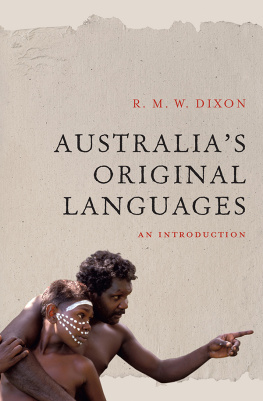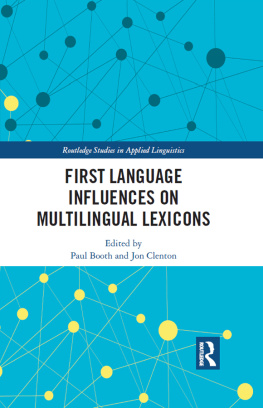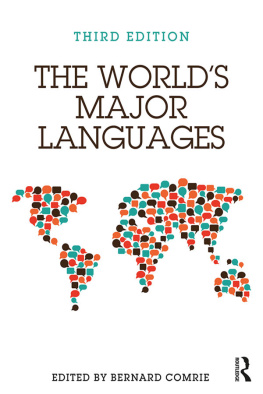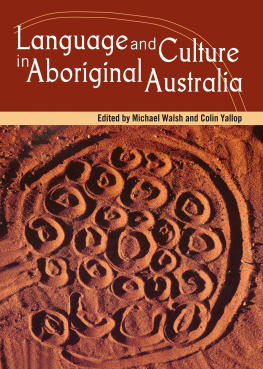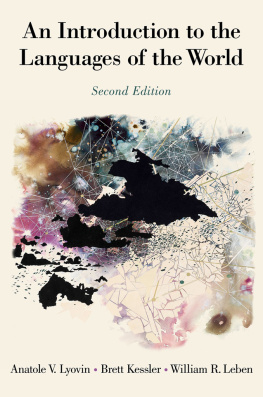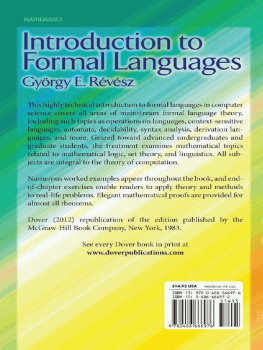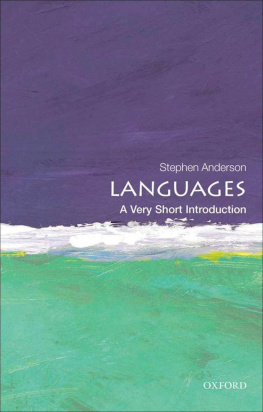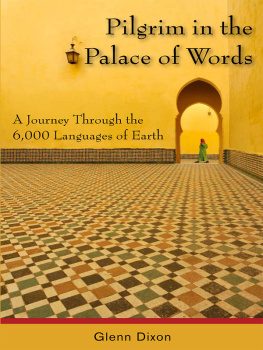Books on linguistics by R. M. W. Dixon
Linguistic Science and Logic
What is Language? A New Approach to Linguistic Description
The Dyirbal Language of North Queensland
A Grammar of Yidi
The Languages of Australia
Where Have All the Adjectives Gone? And Other Essays in Semantics and Syntax
Searching for Aboriginal Languages: Memoirs of a field worker
A Grammar of Boumaa Fijian
A New Approach to English Grammar, on Semantic Principles
Words of Our Country: Stories, place names and vocabulary in Yidiny
Ergativity
The Rise and Fall of Languages
Australian Languages: Their nature and development
The Jarawara Language of Southern Amazonia
A Semantic Approach to English Grammar
Basic Linguistic Theory, Vol. 1, Methodology
Basic Linguistic Theory, Vol. 2, Grammatical Topics
Basic Linguistic Theory, Vol. 3, Further Grammatical Topics
I am a Linguist
Making New Words: Morphological derivation in English
Edible Gender, Mother-in-law Style and Other Grammatical Wonders: Studies in Dyirbal,
Yidi and Warrgamay
Are Some Languages Better than Others?
We Used to Eat People: Revelations of a Fiji Islands traditional village
The Unmasking of English Dictionaries
with Alexandra Y. Aikhenvald
Language at Large: Essays on syntax and semantics
with Barry J. Blake (editors)
Handbook of Australian Languages, Vols 15
with Martin Duwell (editors)
The Honey Ant Mens Love Song, and Other Aboriginal Song Poems
Little Eva at Moonlight Creek: Further Aboriginal song poems
with Grace Koch
Dyirbal Song Poetry: The oral literature of an Australian rainforest people
with Bruce Moore, W.S. Ramson and Mandy Thomas
Australian Aboriginal Words in English: Their origin and meaning
For a full list of publications please go to
www.jcu.edu.au/lcrc/people/deputy-director
First published in 2019
Copyright R. M. W. Dixon 2019
All rights reserved. No part of this book may be reproduced or transmitted in any form or by any means, electronic or mechanical, including photocopying, recording or by any information storage and retrieval system, without prior permission in writing from the publisher. The Australian Copyright Act 1968 (the Act) allows a maximum of one chapter or 10 per cent of this book, whichever is the greater, to be photocopied by any educational institution for its educational purposes provided that the educational institution (or body that administers it) has given a remuneration notice to the Copyright Agency (Australia) under the Act.
Allen & Unwin
83 Alexander Street
Crows Nest NSW 2065
Australia
Phone: (61 2) 8425 0100
Email:
Web: www.allenandunwin.com

ISBN 978 1 76087 523 7
eISBN 978 1 76087 153 6
Set by Bookhouse, Sydney
Cover design: Luke Causby/Blue Cork
Cover photograph: Penny Tweedie/Corbis Historical/Getty
Contents
There has for some time been the need for a book for the general public on the nature of the Indigenous languages of Australia, their subtle grammatical structures and specialised vocabulary. Of how the languages reflect traditional values, and how culture determines the make-up of the grammar. And the ways in which they differ from the familiar languages of Europe.
This book, by Professor R. M. W. Dixon, meets that need. Bob Dixon came out from England, in 1963, to learn and study languages still spoken by members of the First Nations. He found that the original inhabitants were, at that time, not regarded as citizens; they were not permitted to live freely nor to operate their own bank accounts. There was scant understanding among mainstream Australians of their systems of social organisation and values; the later arrivals to the continent interwove arrogance with ignorance. The situation did gradually improve and, in the 1970s, Bob was able to assist his Indigenous friends in their quest for land rights. But there lingers a lack of understanding of the rich tapestry of the original languages, a lack which this volume seeks to satisfy.
For his general survey volume Australian Languages: Their nature and development (2002), Bob studied materials available for each of the 250 original languages of the continent. In the present volume, he quotes from more than three dozen separate languages. Speakers of Dyirbal adopted Bob into their community, sharing with him age-old cultural beliefs, and an intimate knowledge of the rainforest environment in which they live. Throughout the book, he draws extensively on this, his area of special expertise.
Bob Dixon has an international reputation for his work on general linguistics, including studies on the grammar of English and his three-volume magnum opus Basic Linguistic Theory. He has provided comprehensive documentation for Jarawara, spoken in the Amazonian jungle of Brazil, and for the dialect of Fijian spoken on the island of Taveuni. But his overarching interest and efforts have always been focused on Australian languages. Responding to the wishes of his teachers, the last fluent speakers, Bob has published grammars and vocabularies of five Indigenous Australian languages, plus collections of traditional legends and stories, and one volume of song poetry. All but one of these languages are no longer actively spoken but there are programs to revive them, in which Bob is enthusiastically participating.
I am honoured to introduce this volume, the outcome of half a century of immersion in the cultures and languages of the first peoples of Australia.
Alexandra Y. Aikhenvald
Distinguished Professor and Australian Laureate Fellow
James Cook University
The discovery and settlement of Australia took place at least 50,000 years ago. The immigrants soon spread out over the continent and split into many separate groups, which have been traditionally called tribes. But each had its own country, its own political system and laws, and its own language and legends, just like the nations of Europe (albeit on a smaller scale). It is indeed appropriate to refer to them as nations, the First Nations of Australia.
These original inhabitants of Australia, the First Nations, were an enigma to the Europeans who came to share the land with them. Their unfamiliar outward appearance hid a multifaceted social organisation, a classificatory kinship system in which everyone is related to everyone else, and whose roles clearly define ritual responsibilities.
Nothing is more fascinating than the nature of the original languages. There are systems of cases on nouns and tenses on verbs more intricate than those in Greek and Latin. A distinctive speech style which must be used, as a mark of deference, between mother-in-law and son-in-law. A special gender for edible vegetables, to go alongside feminine and masculine. Song styles with distinctive metre and meaning. A plentiful vocabulary dealing with subtle distinctions for propensities such as generosity, jealousy, shame, and bravery.
A portrait of the rich texture of these original languages is presented in this volume. However, we need to start at the beginning, examining the attitudes and happenings which led up to the present-day situation for members of the First Nations and their languages.

